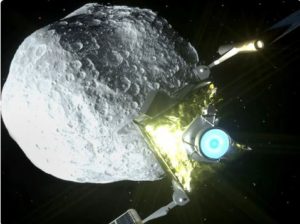
The Dart spacecraft moving towards Dimorphos.
Researchers have developed a new tool that can be used to aim kinetic impactors to deflect asteroids on a dangerous trajectory.
Astronomers could figure out the precise orbits of the asteroid Didymos and its moonlet Dimorphos. This is why the spacecraft was able to hit the bullseye, at a time that was in clear view of ground based instruments. Astronomers were however not sure by how much the moonlet would be deflected, and would have had a better idea if they understood the composition of the asteroid. A kinetic impactor would be aimed differently if the asteroid had a low density, uniform composition, as against a denser asteroid with a less balanced interior. Researchers have developed a new method to investigate the interiors of asteroids, by carefully measuring its spin during close encounters with more massive objects, such as the Earth.
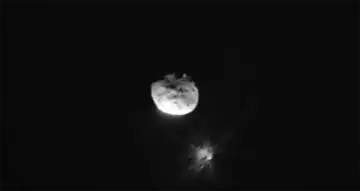 An image of the Dart impact captured by Liciacube.
An image of the Dart impact captured by Liciacube.
The researchers initially developed software to simulate the behaviour of asteroids during close encounters with other, massive bodies within the Solar System. The researchers discovered that the way the asteroid responds depends heavily on its shape and physical properties. The researchers then enhanced the code and ran a number of simulations with a variety of shapes, sizes and internal compositions, or distribution of densities. The simulations were used to examine the changes in the spin of the asteroids during encounters with objects of known masses.
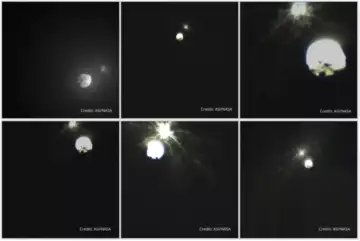 A series of images showing the Dart impact, captured by Liciacube.
A series of images showing the Dart impact, captured by Liciacube.
Planetary scientist Julien de Witsays “It’s similar to how you can tell the difference between a raw and boiled egg. If you spin the egg, the egg responds and spins differently depending on its interior properties. The same goes for an asteroid during a close encounter: You can get a grasp of what’s happening on the inside just by looking on how it responds to the strong gravitational forces it experiences during a flyby.”
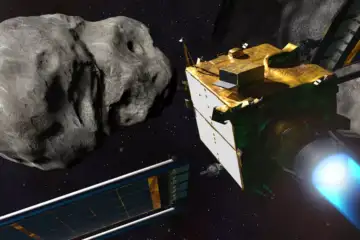 The Dart mission at the Didymos system.
The Dart mission at the Didymos system.
The researchers intend to test the new method taking opportunity of the next close encounter of the asteroid Apophis in 2029. The OSIRIS-REx spacecraft, currently on its way back to the Earth with samples from asteroid Bennu, will be going on an extended mission to study the asteroid Apophis from up close. A paper describing the new method has been published in the Monthly Notices of the Royal Astronomical Society.
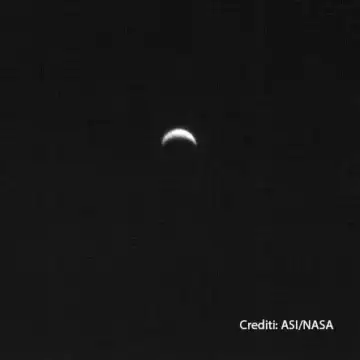 An image of the Earth captured by the Liciacube Explorer Imaging for Asteroid instrument on board the Liciacube spacecraft.
An image of the Earth captured by the Liciacube Explorer Imaging for Asteroid instrument on board the Liciacube spacecraft.




 Driving Naari Programme launched in Chandigarh
Driving Naari Programme launched in Chandigarh






























